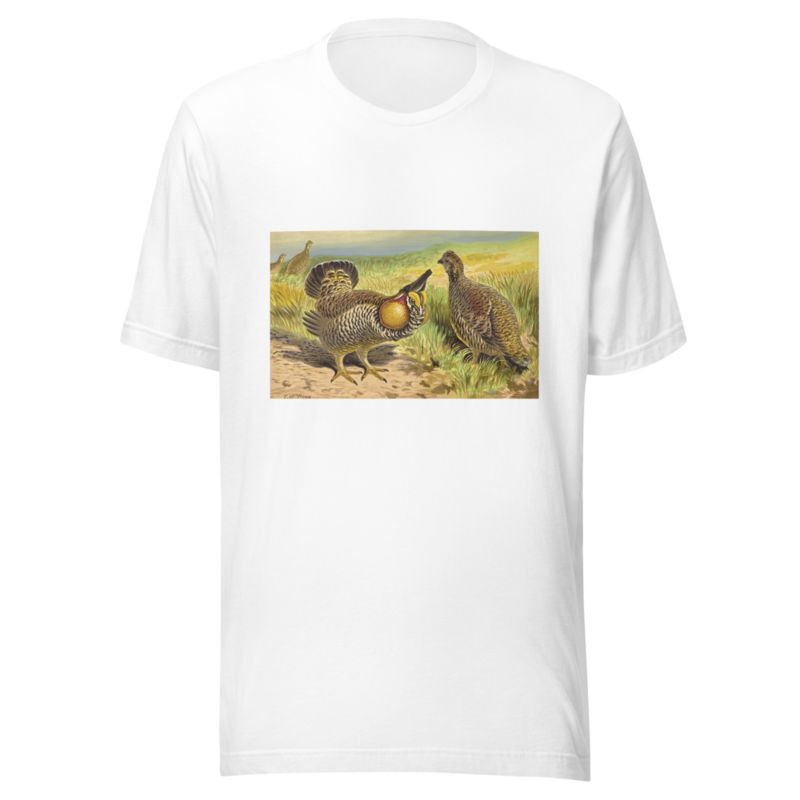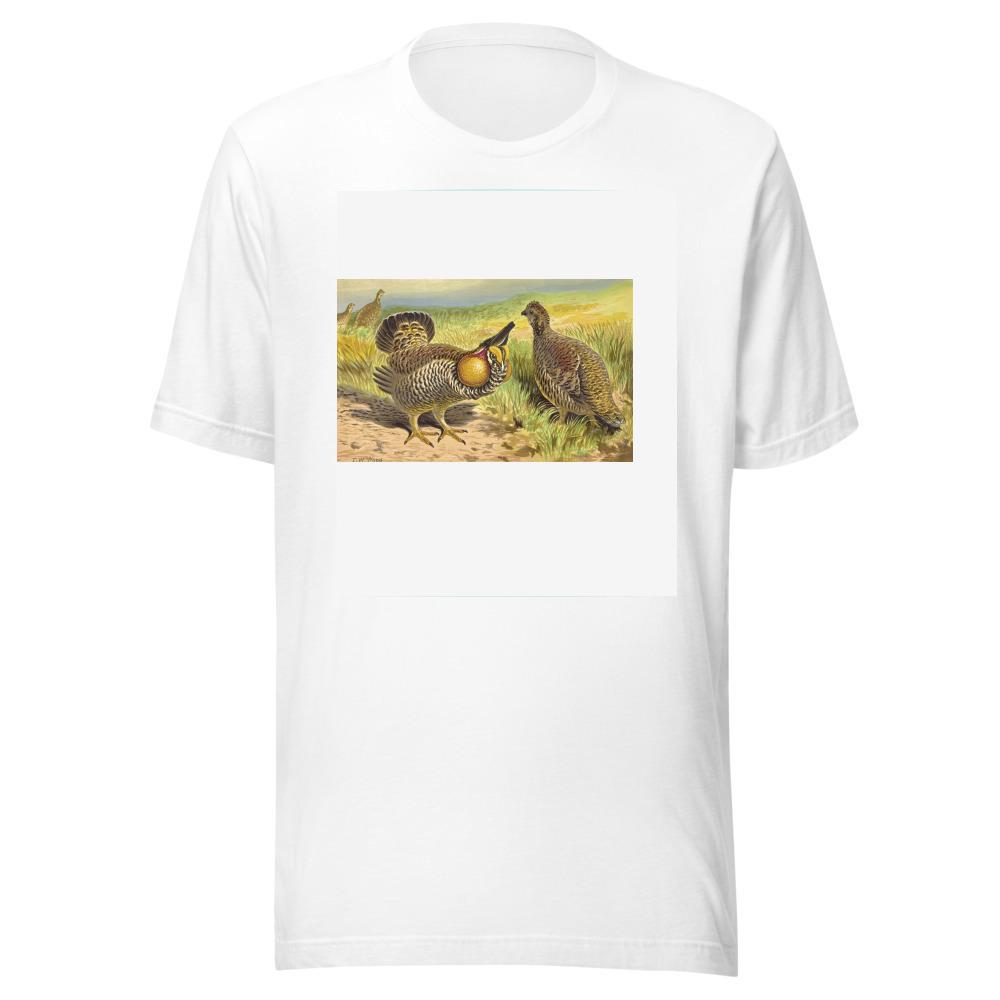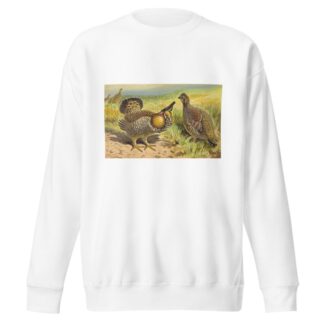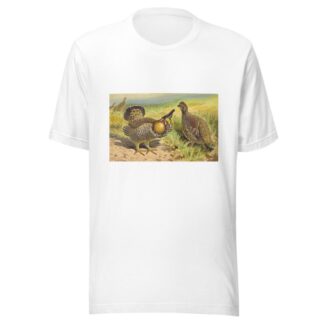Description
Praire Crouse by Thomas Waterman Wood printed on a T-Shirt
About the T-Shirt
Regular fit
Standard length, the fabric easily gives into movement
Casual wear
A classic, everyday option loved by our customers
Side-seamed
Constructed by sewing two parts together, creating a fitted look
The Unisex Staple T-Shirt feels soft and light with just the right amount of stretch. It’s comfortable and flattering for all. We can’t compliment this shirt enough–it’s one of our crowd favorites, and it’s sure to be your next favorite too!
- Solid colors are 100% Airlume combed and ring-spun cotton
- Ash color is 99% combed and ring-spun cotton, 1% polyester
- Heather colors are 52% combed and ring-spun cotton, 48% polyester
- Athletic and Black Heather are 90% combed and ring-spun cotton, 10% polyester
- Heather Prism colors are 99% combed and ring-spun cotton, 1% polyester
- Fabric weight: 4.2 oz./yd.² (142 g/m²)
- Pre-shrunk fabric
- 30 singles
- Side-seamed construction
- Tear-away label
- Shoulder-to-shoulder taping
- Blank product sourced from Nicaragua, Mexico, Honduras, or the US
Thomas Waterman Wood (1823-1903)
Thomas Waterman Wood was an American painter born in Montpelier, Vermont.
Thomas Waterman Wood’s father, John Wood, came to Montpelier from Lebanon, New Hampshire in 1814. The Wood family was of Puritan descent, and it was from Lebanon that John Wood, the father of the artist, married his wife Mary Waterman.
During Wood’s youth, Montpelier was not likely to inspire a man to paint. It was a small town of practical people, lacking in the means of art culture and instruction in art. The hills and valleys, however, were beautiful, filled at all seasons with a wonderful light, and these had and continued to have for Wood an inspiration and influence throughout his life.
When fortune permitted, Wood went to Boston and studied for a short time in the studio of Chester Harding, a portrait painter.
It may be that his reputation as an artist will rest upon his figure pictures, although his very numerous portrait paintings involved much of the effort of his life and are most certainly characterized but simple and strong composition, great technical execution and a masterful use of colors. It may also follow that he will yet achieve his most memorable honors from the interpretations which he has made of great paintings, but from the stand point of those whose minds and hearts are won by considerations of local history the highest interest will be assigned to works in which Wood included characters from his native place.






Reviews
There are no reviews yet.